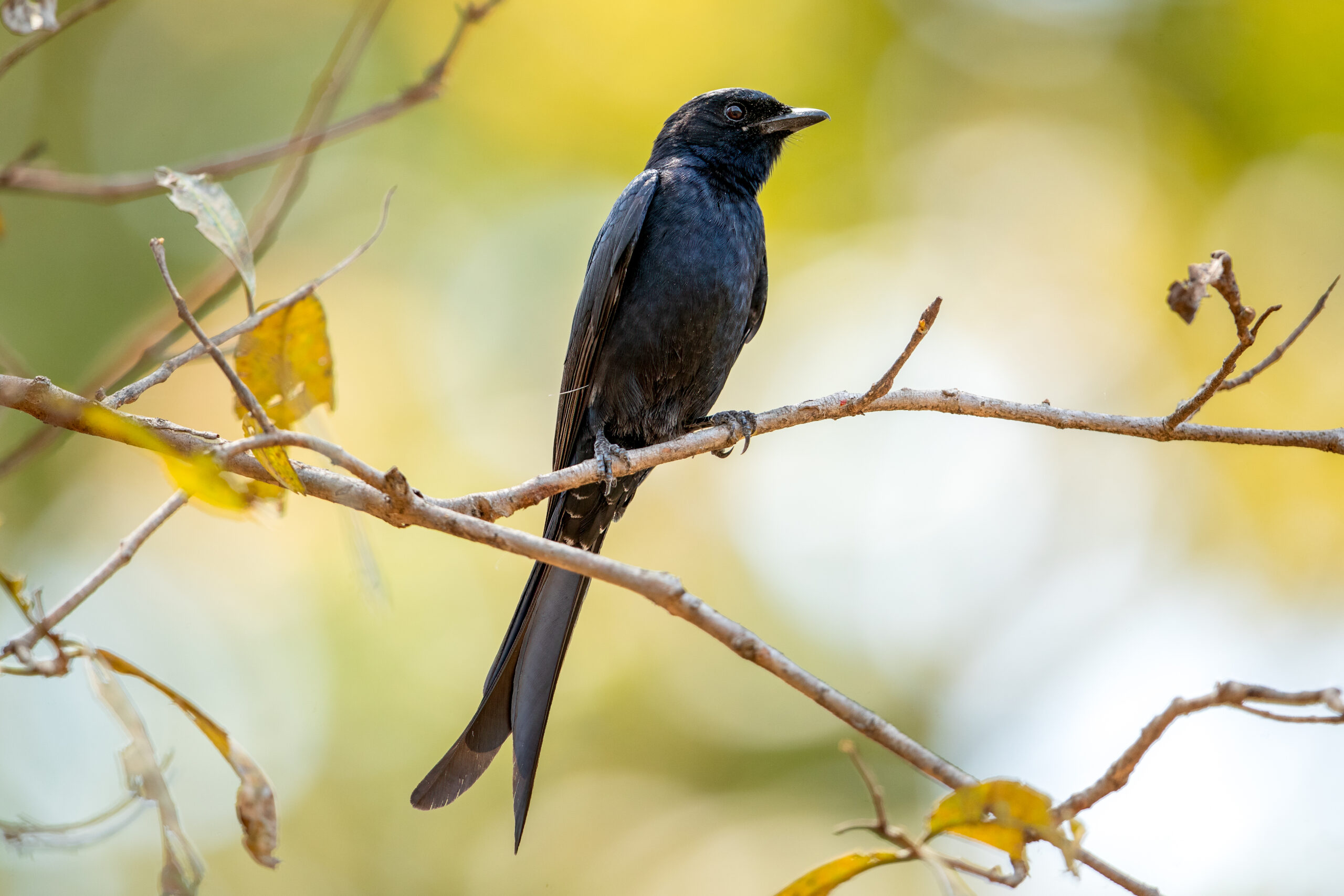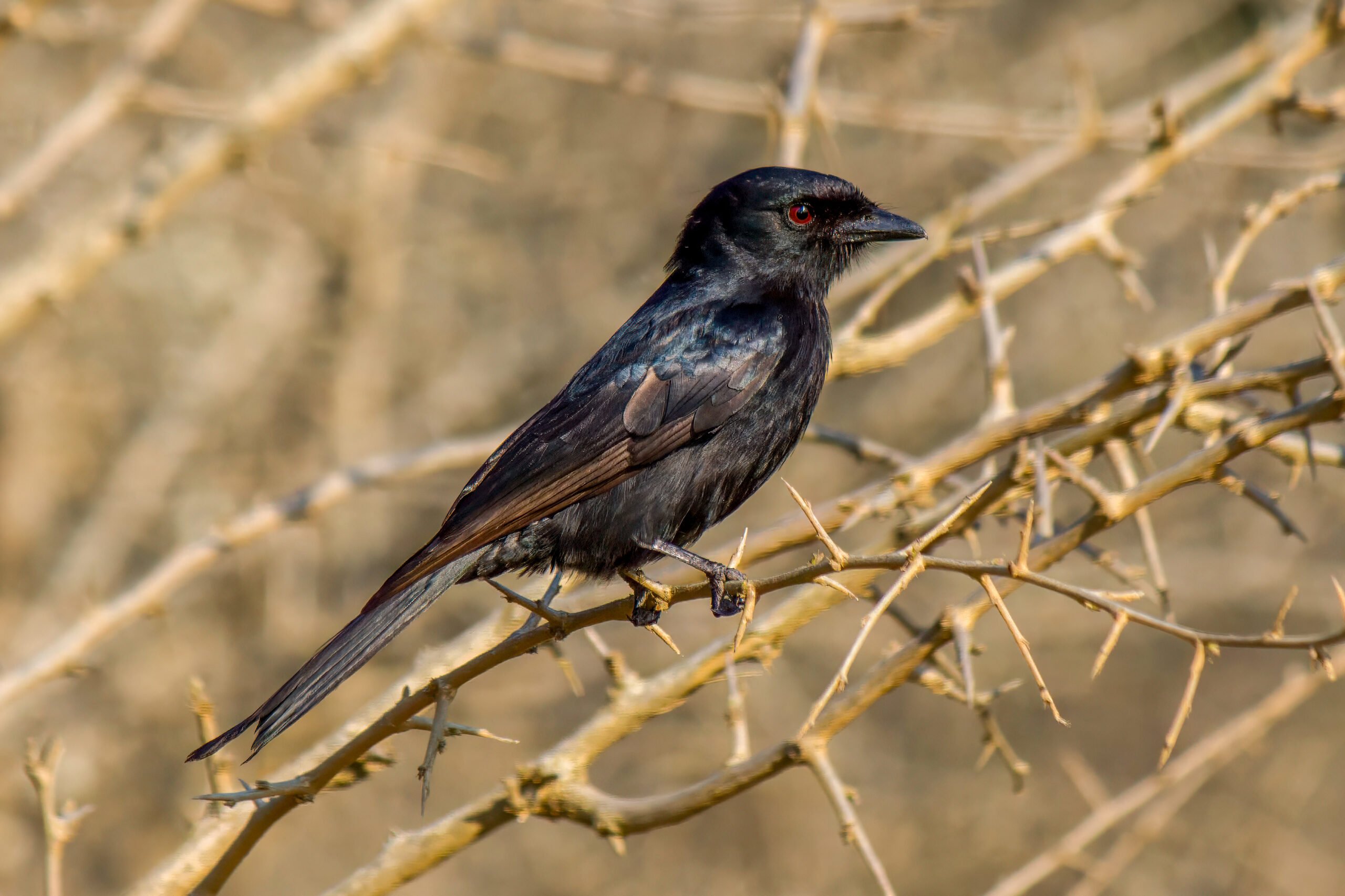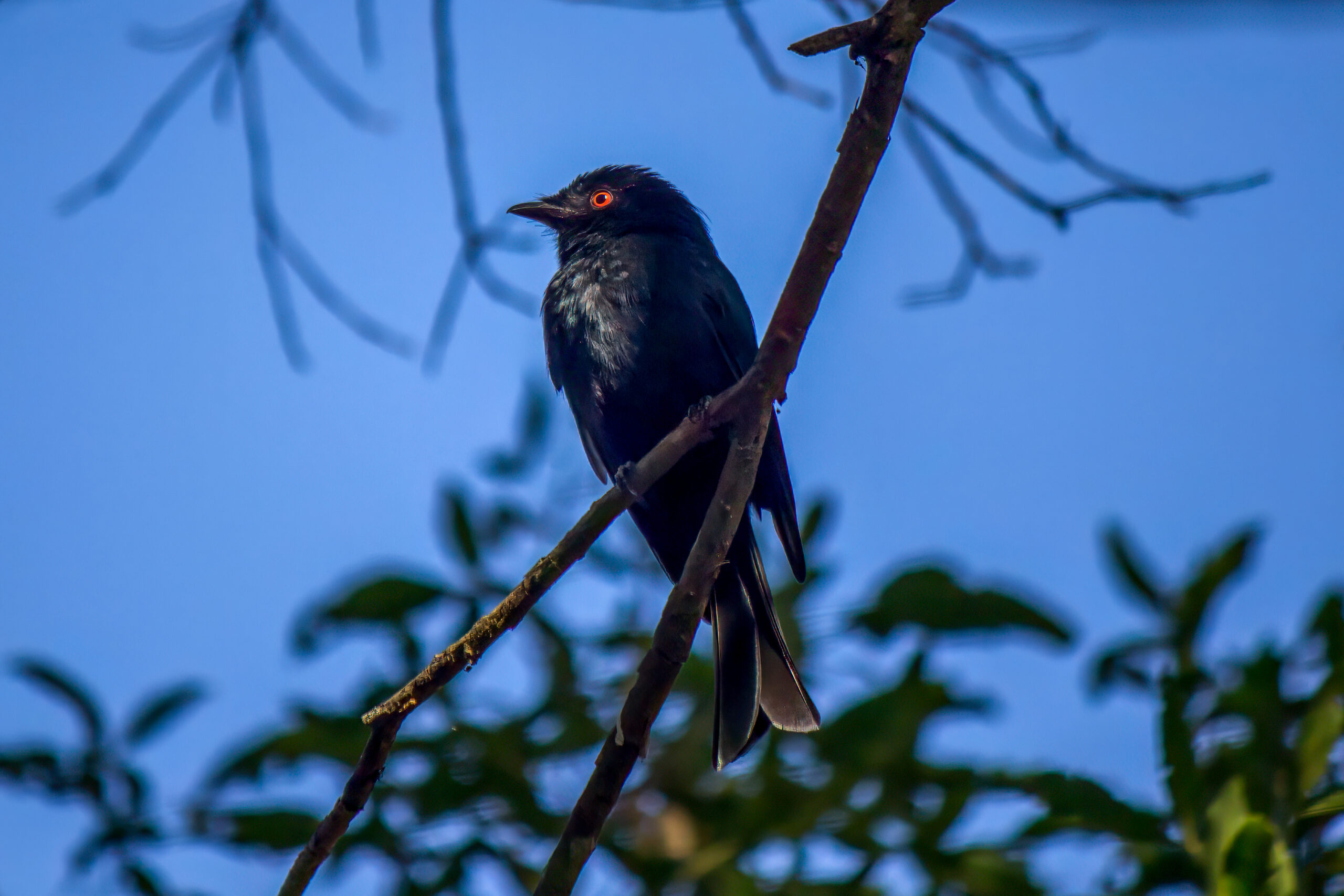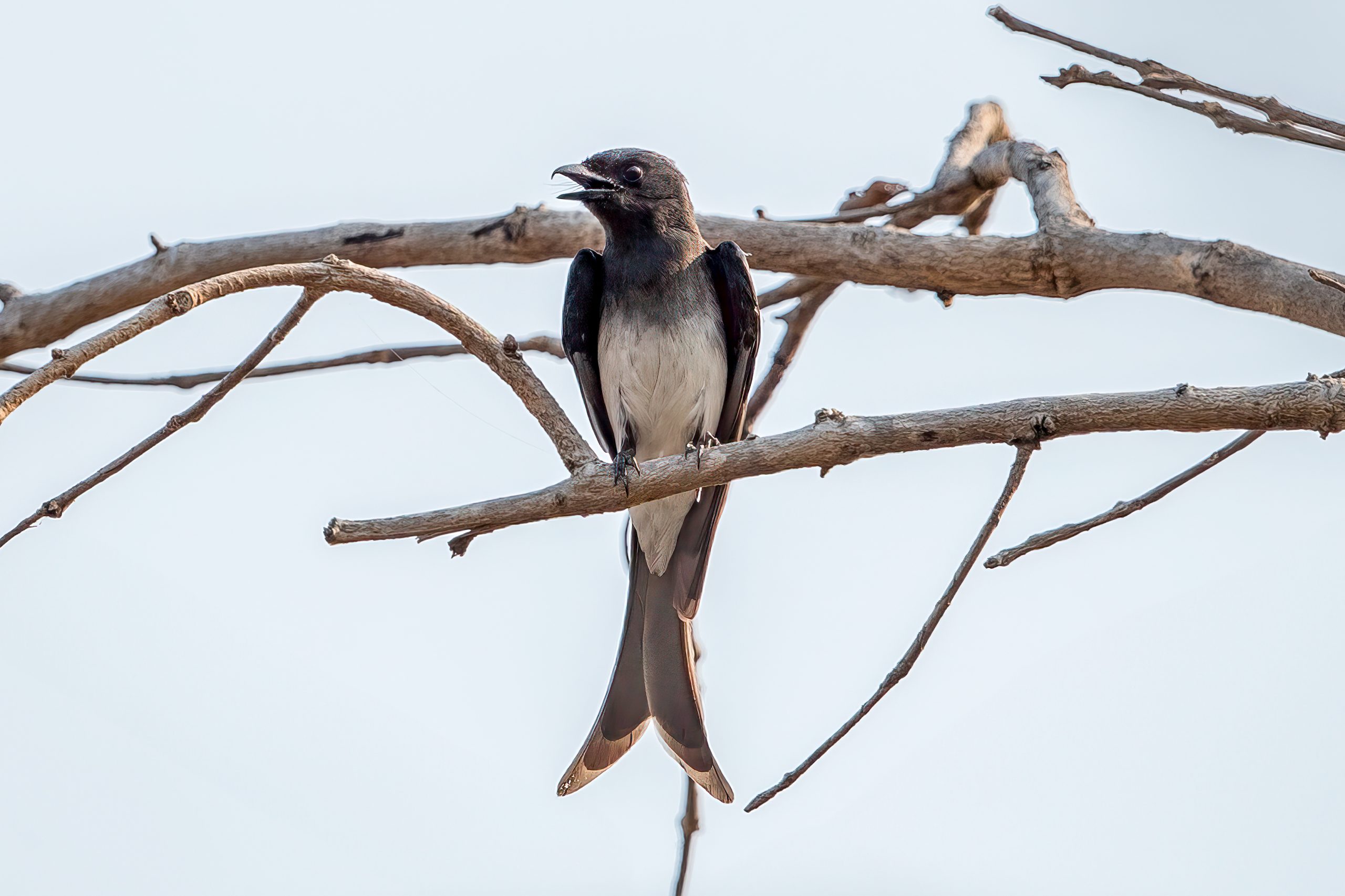Description
The black drongo (Dicrurus macrocercus) is a distinctive bird known for its glossy black plumage and forked tail. It is found across much of South, East, and Southeast Asia. This drongo measures approximately 26-31 cm (10.-12.2 in) in length. It has a robust bill and deep red eyes. It was once considered a subspecies of the African fork-tailed drongo (Dicrurus adsimilis), and the two are very similar in appearance. The black drongo has a longer tail and adults have a telltale white spot at the base of the gape, which also separates from the often similar ashy drongo (Dicrurus leucophaeus).
Diet & habitat
Found across a variety of habitats, the black drongo avoids only the driest deserts and densest forests. It is commonly seen in savanna woodlands, grasslands with scattered trees, plantations, gardens, and parks. The diet of the black drongo is versatile, mainly comprising insects which it adeptly catches in flight. Occasionally, it may also consume small vertebrates such as reptiles, fish, and birds.
Migration
The black drongo is mostly resident across its range, but northern populations are migratory, migrating to more southern locations outside of the breeding season. Migrating populations are found in China and the Korean peninsula in the East, as well as in northern Pakistan and Afghanistan in the West.
Nesting
Breeding season for the black drongo typically occurs from March to August, but it varies with geographical location. The nest, a small cup made of twigs and spider webs, is typically placed in a tree fork. Females lay 2 to 5 eggs, which are incubated by both parents over a period of about 15-18 days. Fledging occurs within 16-22 days post-hatching, with both parents involved in feeding the chicks. The black drongo is known for its aggressive behavior towards larger birds when defending its nesting territory, often seen chasing away much larger raptors.
Status
The black drongo is classified as least concern on the IUCN Red List. It is a common species with a stable population, not currently facing any significant threats. Its adaptability to various habitats contributes to its resilience.







